
When I was in college I tutored a high school student in mathematics for three years. I took it as a personal challenge to create widely varied methods of explanation and practice to get the material not just to stick, but to be understood and retained in a flexible way. When we were doing geometry, one of my attempts was physical instantiations of triangles and quadrilaterals with dowels and rubber tubing. All the individual pieces plus measurements are after the cut!
A rectangle has opposite pairs of parallel, same-length sides and a right angle in every corner. The diagonals bisect each other but are not necessarily perpendicular.
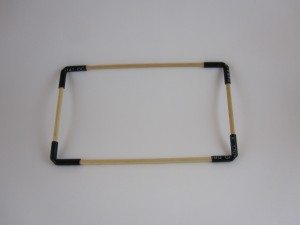
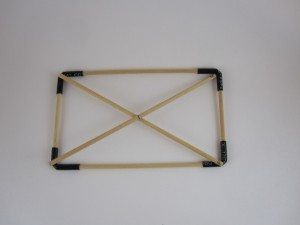
I didn’t get a picture of this, but you can squish the rectangle into a nonrectangular parallelogram, where opposite sides are still parallel and same-length, but the corners are no longer right. The diagonals change length and again, are not necessarily perpendicular, but they still bisect each other.
A kite has two pairs of same-length sides, but they are adjacent, not opposite as in a rectangle. The angles of the corners are determined by the lengths of the sides. The long diagonal bisects the short one (if they are equal they bisect each other), and they are perpendicular.
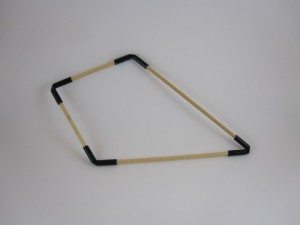
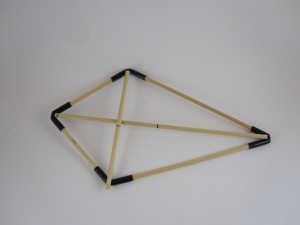
A trapezoid has one pair of parallel sides, opposite to each other. The remaining sides may be the same length, in which case the trapezoid is symmetric across the midpoint of the parallel sides, or they may not be (a scalene trapezoid, the second picture below).
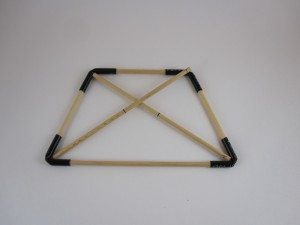
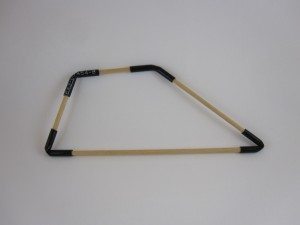
A rhombus has all four sides the same length. Its diagonals are perpendicular and bisect each other.

A square is all of the above simultaneously: four same-length sides meeting at right angles. The diagonals are the same length as each other and bisect each other at right angles. This square is the same object as the rhombus above.
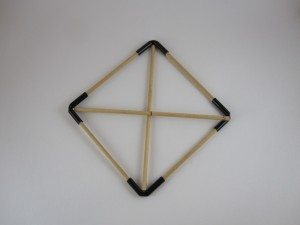
Before dismantling this all I measured the dowels. Here’s what you need to make your own:
1/4″ rubber tubing and 3/8″ dowels
Rhombus/square: 5″ sides; square diags appx 7″, rhombus diags appx 5 7/8″ and 8 1/16″
Kite: 4″ and 7″ sides; diags appx 5 5/16″, 9 5/16″
Trapezoid: three 4″ sides, one 7″ side; diags appx 6 5/8″
Parallelogram/rectangle: 4″ and 7″ sides; rectangle diagonals appx 8 1/16″; parallelogram diags were lost so measure your own for the degree of slant you’d like
Somehow I did not measure the scalene trapezoid. You could also make a general quadrilateral without any special characteristics.
Triangles are straightforward: right (3-4-5, which could be 4.5-6-7.5 for ease of use if desired), equilateral (4-4-4 or 5-5-5), isoceles (maybe 4-5-5), scalene (4-5-6?). I’m not sure how beneficial they are to the student, however, compared to the quadrilaterals: seeing the deformation of square to general rhombus, rectangle to general parallelogram; comparing a kite and parallelogram with the same set of side lengths; seeing the how diagonals intersect.